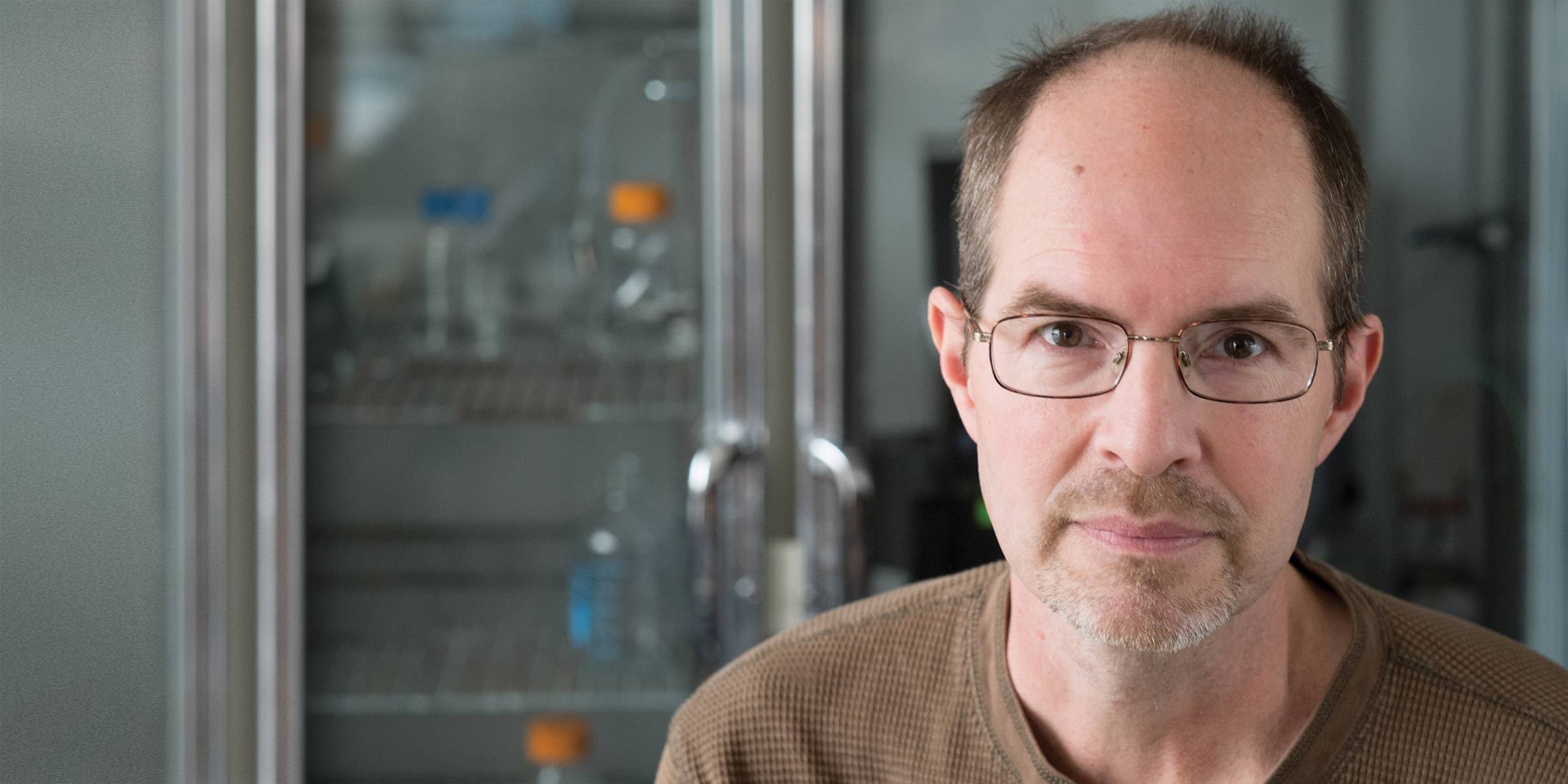Seth A. Darst, Ph.D.
Jack Fishman Professor
All cells make RNA with a complex molecular machine, the DNA-dependent RNA polymerase. Our group determines three-dimensional structures of RNA polymerase and associated proteins in order to explore the mechanism and regulation of bacterial transcription. This work has implications for understanding how gene expression is controlled in many organisms. The structure and function of the SARS-CoV-2 RNA synthesis machinery is also under study.
Our diverse and collaborative laboratory studies RNA synthesis in bacteria and in SARS-CoV-2.
Bacterial Transcription Cycle
In its simplest bacterial form, the DNA-dependent RNA polymerase (RNAP) comprises four subunits with a total molecular mass of approximately 400 kDa. We focus on highly characterized prokaryotic RNAPs, which share basic structure and catalytic function with more complex archaeal and eukaryotic enzymes.
Through the study of prokaryotes, scientists have elucidated the basic steps of the transcription cycle: initiation, elongation, and termination. We use a combination of approaches to understand the structure, function, and regulation of the entire bacterial transcription cycle. Cryo-electron microscopy and other approaches are implemented to investigate how these complexes are regulated by extrinsic regulators, and how they interconvert through transient intermediates involving large conformational changes in the nucleic acids, RNAP, or both.
The lab seeks a detailed structural and functional understanding of the entire transcription cycle—knowledge that will be essential to explain the fundamental control of gene expression and to target RNAP with small-molecule antibiotics. More fundamentally, we pursue a complete understanding of how the cycle is driven by a complex molecular machine that uses binding and chemical energy to effect conformational changes—and how this process is modulated by regulators.
SARS-CoV-2 RNA synthesis
SARS-CoV-2 is the causative agent of the current COVID-19 pandemic. The SARS-CoV-2 genome is replicated and transcribed by the RNA-dependent RNA polymerase holoenzyme in a replication-transcription complex (RTC), which is the target for antivirals such as remdesivir (Rdv). In addition to its essential replication-transcription activity, nsp12 contains an N-terminal domain unique to nidoviruses, the NiRAN domain, which plays an essential role in RNA capping and possibly other roles. The holo-RdRp is thought to coordinate with a cast of co-factors to carry out its function. Some of these factors, such as the nsp13 helicase and the nsp10/nsp14 proofreading assembly, are also essential for viral replication and are antiviral targets.
In collaboration with Dr. Elizabeth Campbell, we are studying the structural architecture of the SARS-CoV-2 RTC and its associated factors, knowledge that could help in the design of novel treatments for COVID-19.
Darst is a faculty member in the David Rockefeller Graduate Program, the Tri-Institutional M.D.-Ph.D. Program, and the Tri-Institutional Ph.D. Program in Chemical Biology.
